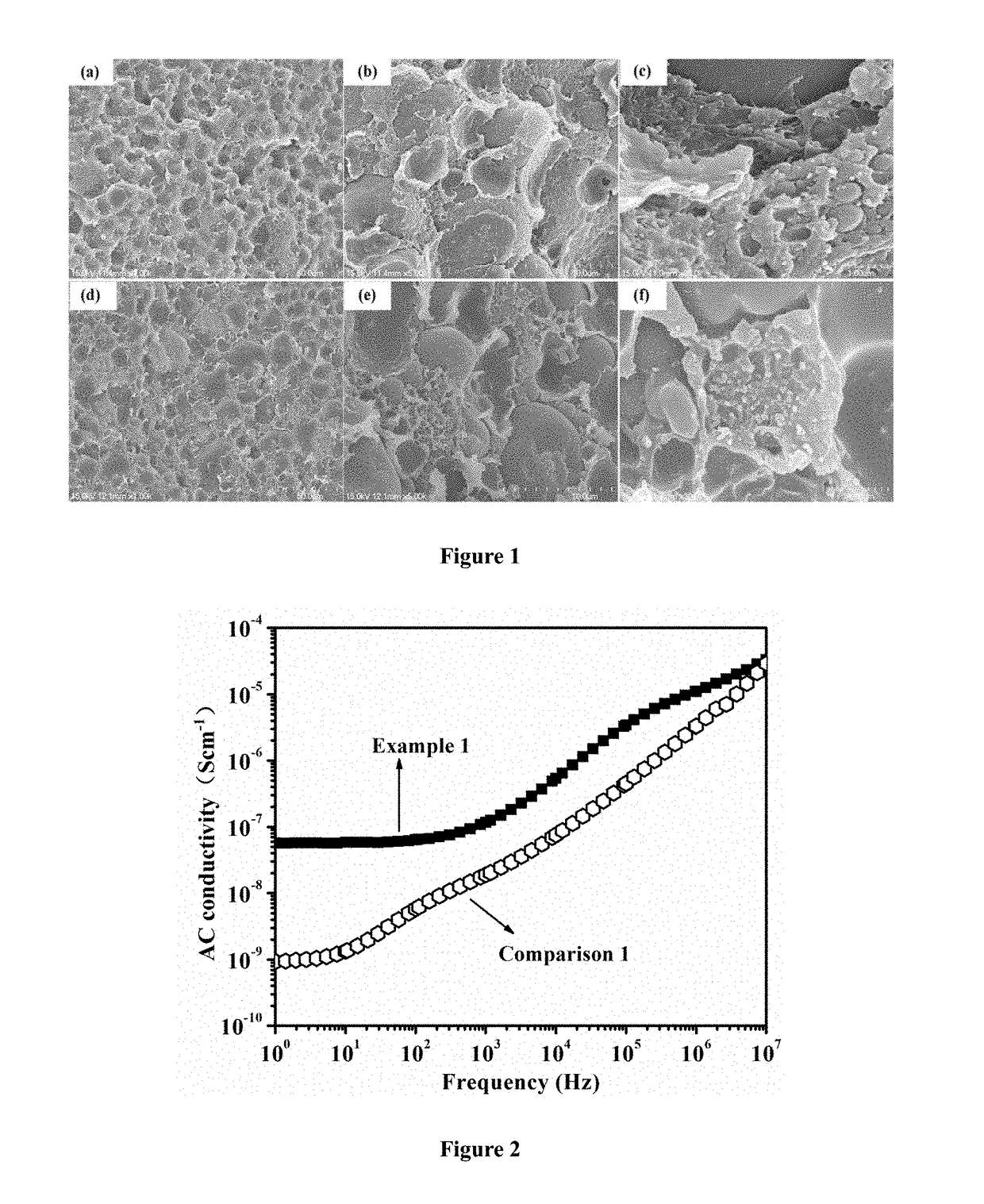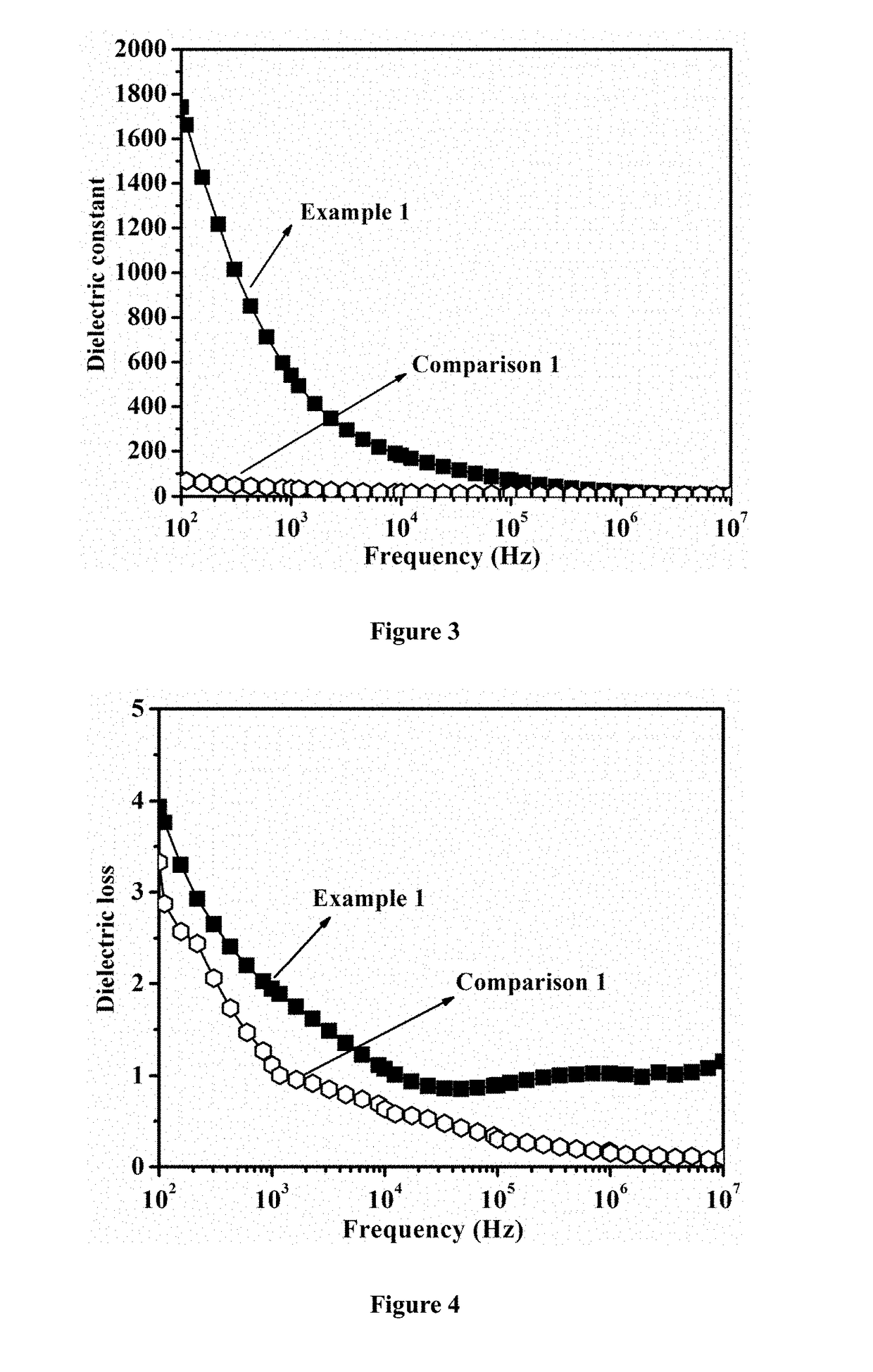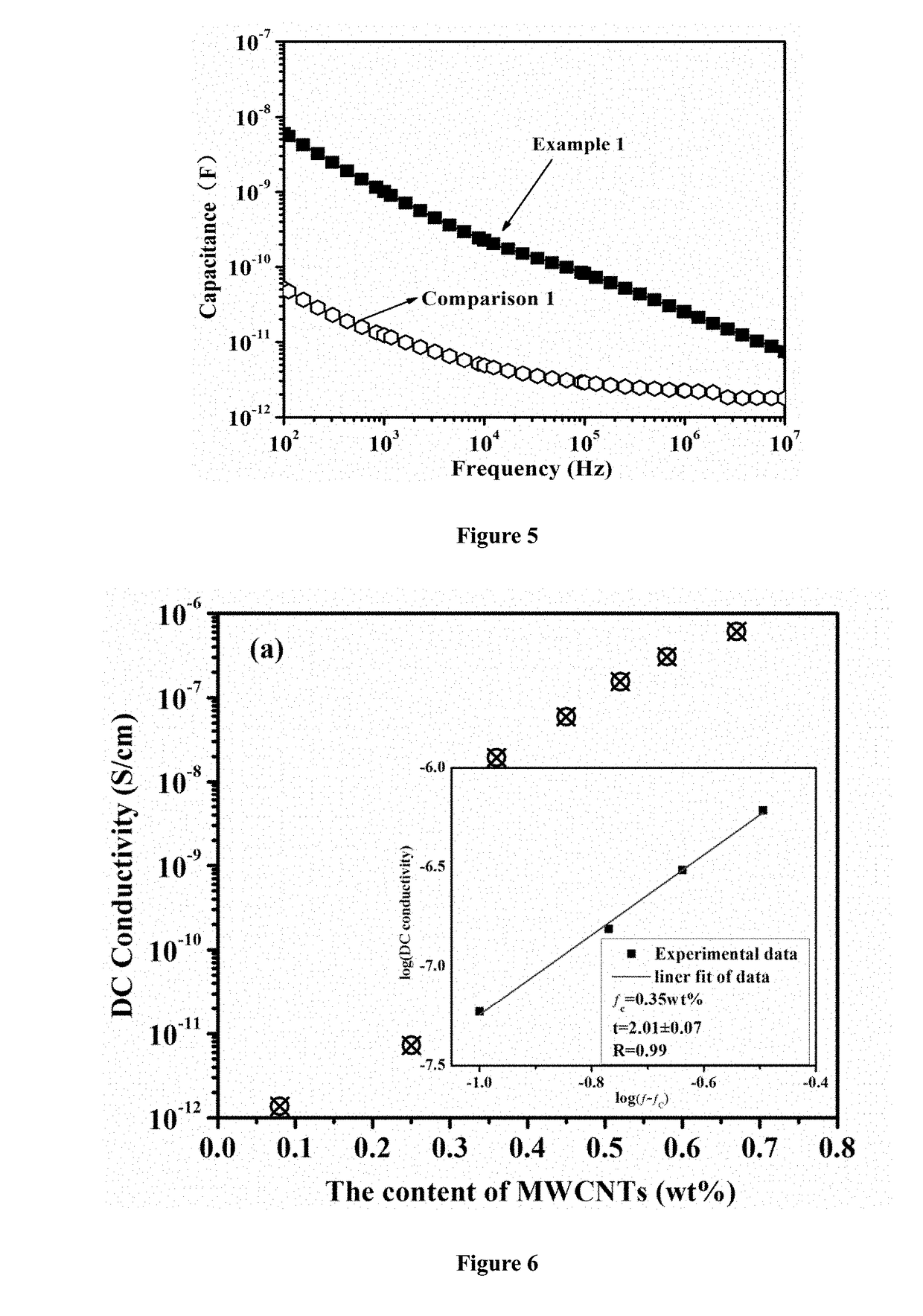Carbon nanotube/polyetherimide/thermosetting resin dielectric composite and preparation method therefor
a technology of carbon nanotubes and dielectric composite materials, which is applied in the direction of plastic/resin/waxes insulators, organic insulators, electrical appliances, etc., can solve the problems of high dielectric loss, high dielectric constant, and ineffective polymeric matrix for obtaining high dielectric constant and low dielectric loss at the same time, and achieves good stability of structure , the effect of large-scale production
- Summary
- Abstract
- Description
- Claims
- Application Information
AI Technical Summary
Benefits of technology
Problems solved by technology
Method used
Image
Examples
example 1
[0026]1. Preparation of Carbon Nanotube / Poly(Ether Imide) Complex
[0027]The melting temperature of Haake torque chamber was set at 330° C. and the shearing rate was 60 r / min. 3.0 g multi-walled carbon nanotubes and 60 g poly(ether imide) were homogenously blended to form a blend, which was then put into the Haake torque chamber, and mixed for 15 min. After that, cooled to the room temperature, carbon nanotube / poly(ether imide) complex was achieved.
[0028]2. Preparation of Dielectric Carbon Nanotube / Poly(Ether Imide) / Bismaleimide Composite
[0029]10.5 g carbon nanotube / poly(ether imide) complex was dissolved in 100 mL CH2Cl2 to obtain a homogenous solution A, into which 37 g 2,2′-diallylbisphenol A was added. The resultant solution was heated to 150° C., into which 50 g 4, 4′-bismaleimidodiphenylmethane was slowly added with vigorous stirring, and the whole mixture was maintained at 150° C. for 40 min to get a prepolymer. The prepolymer was put into a vacuum for de-gassing at 145° C. for...
example 2
[0041]1. Preparation of Carbon Nanotube / Poly(Ether Imide) Complex
[0042]The melting temperature of Haake torque chamber was set at 330° C. and the shearing rate was 60 r / min. 0.6 g multi-walled carbon nanotubes and 60 g poly(ether imide) were homogenously blended to form a blend, which was then put into the Haake torque chamber and mixed for 15 min. After that, cooled to the room temperature, the carbon nanotube / poly(ether imide) complex was achieved.
[0043]2. Preparation of Dielectric Carbon Nanotube / Poly(Ether Imide) / Bismaleimide Composite
[0044]10.1 g carbon nanotube / poly(ether imide) complex was dissolved in 75 mL CH2Cl2 to obtain a homogenous solution A, into which 30 g 2,2′-diallylbisphenol A was added. The resultant solution was heated to 150° C., into which 50 g 4, 4′-bismaleimidodiphenylmethane was slowly added with vigorous stirring, and the whole mixture was maintained at 150° C. for 40 min to get a prepolymer. The prepolymer was put into a vacuum for de-gassing at 145° C. f...
example 3
[0045]1. Preparation of Carbon Nanotube / Poly(Ether Imide) Complex
[0046]The melting temperature of Haake torque chamber was set at 340° C. and the shearing rate was 100 r / min. 4.2 g multi-walled carbon nanotubes and 60 g poly(ether imide) were homogenously blended to form a blend, which was then put into the Haake torque chamber, and mixed for 10 min. After that, cooled to the room temperature, carbon nanotube / poly(ether imide) complex was achieved.
[0047]2. Preparation of Dielectric Carbon Nanotube / Poly(Ether Imide) / Bismaleimide Composite
[0048]10.0 g carbon nanotube / poly(ether imide) complexes was dissolved in 100 mL CH2Cl2 to obtain a homogenous solution A, into which 45 g 2,2′-diallylbisphenol A was added. The resultant solution was heated to 150° C., into which 50 g 4, 4′-bismaleimidodiphenylmethane was slowly added with vigorous stirring, and the whole mixture was maintained at 150° C. for 40 min to get a prepolymer. The prepolymer was put into a vacuum for de-gassing at 145° C. ...
PUM
| Property | Measurement | Unit |
|---|---|---|
| temperature | aaaaa | aaaaa |
| dielectric constant | aaaaa | aaaaa |
| dielectric constant | aaaaa | aaaaa |
Abstract
Description
Claims
Application Information
 Login to View More
Login to View More - R&D
- Intellectual Property
- Life Sciences
- Materials
- Tech Scout
- Unparalleled Data Quality
- Higher Quality Content
- 60% Fewer Hallucinations
Browse by: Latest US Patents, China's latest patents, Technical Efficacy Thesaurus, Application Domain, Technology Topic, Popular Technical Reports.
© 2025 PatSnap. All rights reserved.Legal|Privacy policy|Modern Slavery Act Transparency Statement|Sitemap|About US| Contact US: help@patsnap.com



